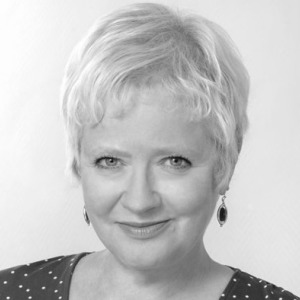Top Tips On Opening and Closing New Business Meetings
24 Sep 2015

In our experience, the two parts of a new business meeting agencies fear most are the opening and the closing. Once the meeting is in full swing agencies are very comfortable showing and talking through their work and how they’ve helped other clients solve problems. BUT, the opening tends to be awkward as does the close, so here are some tips on how to make the topping and tailing a more pleasurable experience for both parties:
You all know the scenario, the social chit chat whilst walking along the corridor to the meeting room. ‘The weather’s terrible isn’t it?’ ‘How was your journey?’ ‘Can I get you something to drink?’
It may be banal but it’s a social more we all adhere to when meeting a prospective client for the first time, particularly when the meeting has been set up for you by an outsourced business development agency.
The Japanese have it sorted – the formal exchange of business cards is the trigger to commence the business conversation. We don’t have that ritual in the UK and it can be very difficult, and sometimes awkward and stilted to move from chatting about the weather to getting the business end of the conversation started.
Here are some top tips to bridge that gap:
Research common ground
I recommend that your pre-meeting research focuses on finding some common ground or touch points. If you look hard enough at their personal LinkedIn profile for example, you are bound to uncover that they used to work at a company that a friend of yours worked at, went to the same University as a family member or are part of the same discussion group on LinkedIn etc.
This allows you to open up the conversation to some common ground, which makes both parties feel more comfortable with each other – remember that they’re also meeting someone they’ve never met before and it’s your job to make the whole process an enjoyable experience that they’ll remember. Focus on building trust and confidence in your relationship throughout the meeting – most decisions are made on an emotional and intuitive level, assuming your agency’s experience, size, location, profile etc. meets their rational requirements as well.
Form an opinion
Another area to focus on in your pre-meeting preparation is to build an opinion, observation or insight about their business, their competition or the marketplace in which they operate. Be prepared to put yourself on the line by sharing this with them early on in the meeting. A golden rule in a sales situation is that the more you give, the more you’ll get back. Even if your opinion, observation or insight is wrong (and make sure you qualify it by saying that it’s from an external perspective) you will have opened up a conversation and encouraged the prospect to respond, hopefully with their own opinion on what their current challenges are.
Map out the meeting to the prospect
Don’t be afraid to set the scene for the meeting and take control of how you would like it to pan out, ensuring of course that you get their input into the process too. You’ve approached them and you want to work with them, so state this clearly up front and set out your expectations for the meeting. This scene setting should include the following:
– a reference to how long the meeting should take and how long they’ve got
– that you would like to focus on their challenges and priorities rather than ramble on about your agency
– that you will share relevant case studies with them once you understand their issues
– that you would like a second meeting, if appropriate, to demonstrate how you could potentially help them resolve these issues
– that you have prepared a leave behind which they can share with their colleagues if they would like to involve others in the decision making process
We all know the 5 P’s for presentations (of which there are many versions, my personal favourite being PURPOSE, PLAN, PREPARE, PRACTICE AND PRACTICE again) and this is the case for first meetings as well.
You need to consider every aspect of a meeting, particularly first meetings where there is no history, and moving seamlessly from the weather chat to a serious discussion about their business and its challenges can be a lot easier if you’ve prepared thoroughly.
Everyone hates the phrase ‘closing’. It conjures up images of a cheesy salesperson selling snake oil, often with some of it smothered liberally on their hair!
Unfortunately this loathing can transfer into a fear of closing and a lot of people, particularly in the creative industries, are wary of closing techniques and practices. This then manifests itself into wasted opportunities, where a ‘close’ could have either generated a brief or at the very least, a second meeting.
Here are 3 simple tips to help you close more effectively:
Pre-close
I have referred to pre-closing in loads of other blogs but it certainly bears repetition. This is where you state your desired outcome at the beginning of the meeting, whilst setting the scene. Here’s an example of how you could do it.
‘Thanks for meeting me today. I understand from your conversation with my colleague John that you’re currently using a range of agencies for different elements of your marketing mix, and that you’re always happy to meet new agencies. It would be great if you could talk me through some of your current priorities and challenges so I could share some relevant case studies with you. Obviously, if you think there’s something we could help you with I would like to set up a follow up meeting so we could present some potential ways of helping you…..’
Ignore my language, obviously this is all very personal, but do understand the principle of what sits behind this. You are already stating your desire to work with this company and have planted a seed for the next step. This enables you to conclude the meeting far more effectively, as you are referring to something you have already touched on. This makes the ‘close’ at the end much more comfortable for both parties as the expectations have been set.
Equally, if there isn’t anything immediate that warrants a follow up meeting, you can just as easily and comfortably agree the next steps – how, when and how often to keep in touch with them, so that you stay top of mind for future work. It’s also really worth asking what kind of projects they can see you potentially getting involved with in the future. This pushes them to visualise how you could help in the future and also ensures that you have something tangible to focus on in the follow up calls.
Offer something of value
When you’re in a competitive situation (which you probably will be in most scenarios nowadays, even with current clients) try adding something of low cost to you but high value to your client/prospect to help secure the business. This could be offering to spend a couple of hours with their department sharing your knowledge or insights into something new or niche. All it will cost you is your time but the feel good factor of this cannot be underestimated. You’ve also now got a further group of influencers on your side!
Spend some time before the meeting thinking about what they might consider to be of high value and be prepared to put the effort in to deliver this. It’s always worth ‘walking a mile in their shoes’ before the meeting anyway to consider what barriers the prospect may have to working with your agency and the reasons why you would be great fit for them.
Do not be afraid to close!
You’re meeting this person in this company because you want to work with them – they know this and so should you. It’s not cheesy, it’s expected and if you don’t, you’ve just left the door open for the next agency that walks into their office!
If you’ve set the scene and their expectations properly in the first place (see above) then the close comes across as the most natural thing to do at the end of the meeting.
Make sure you summarise first and keep your language simple, for example:
‘Thanks very much for taking the time to share some of your current challenges with me today. I hope the case studies I’ve shown you reflect how we’ve helped other companies facing similar issues and I would really like the opportunity to do the same for you. Do you have any current or imminent projects that we could have a look at for you? We could then come back in and talk through our proposed solution.’
If the meeting has gone well, then there’s nothing wrong with asking a direct question like this; prospects will soon tell you if there’s nothing imminent but there could be something in 3 months’ time. You can then move on to agreeing when the best time is to call back.
In summary, make sure you prepare how to open and close the meeting. This will make you feel in control and will have a positive effect on your confidence, which in turn will lead to more productive, purposeful meetings.
This article first appeared on the Alchemis website.

Please login to comment.
Comments